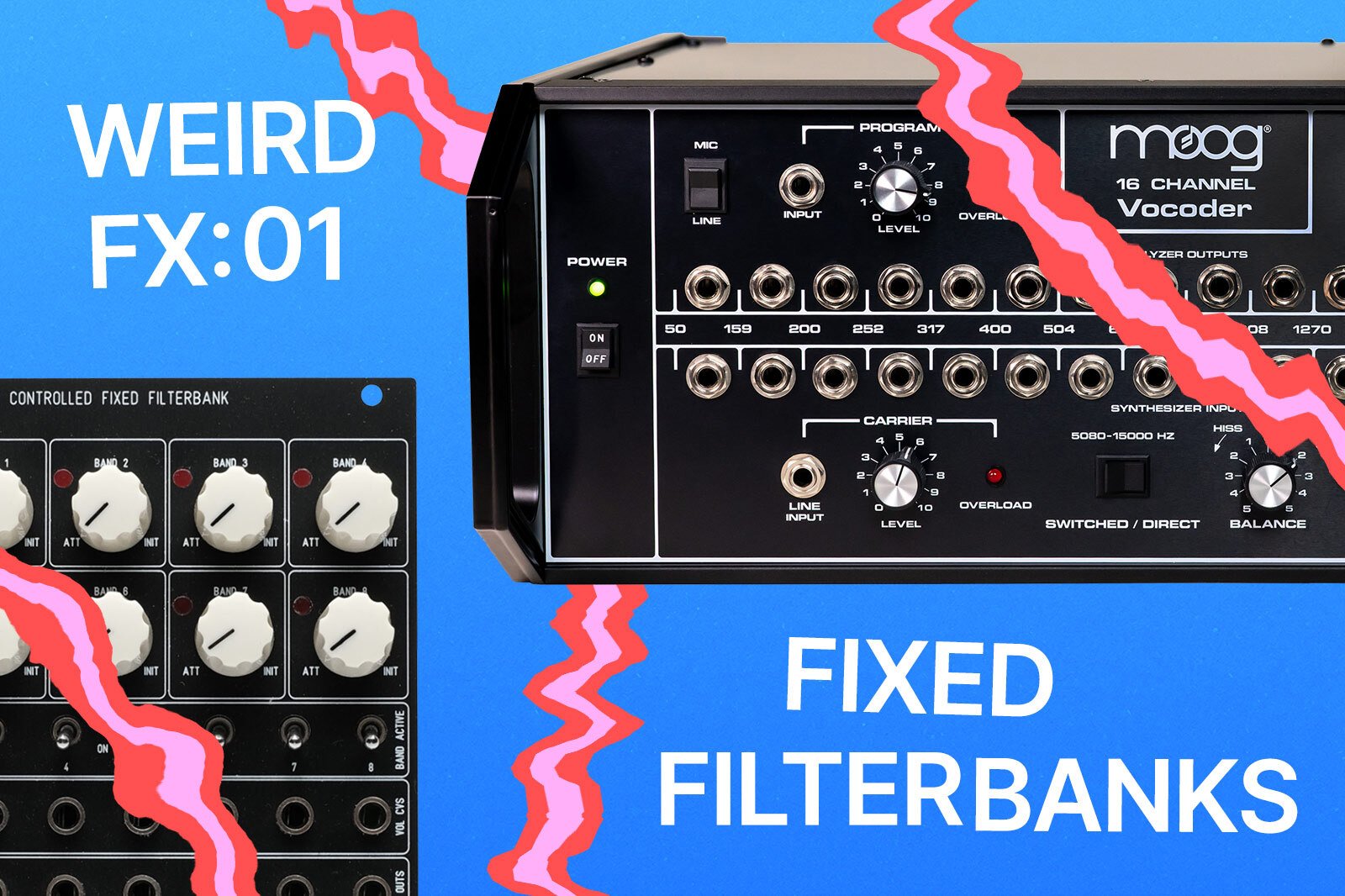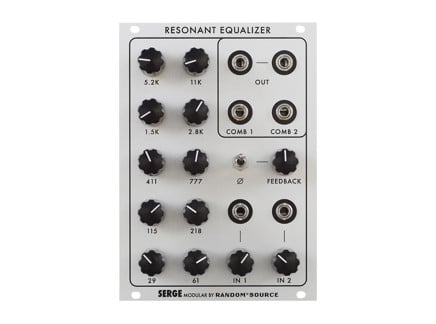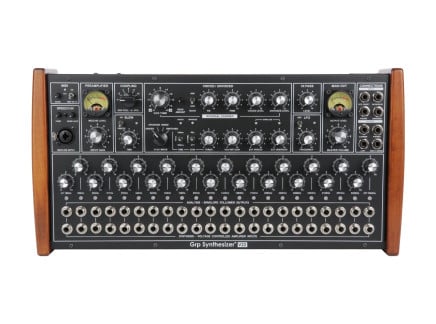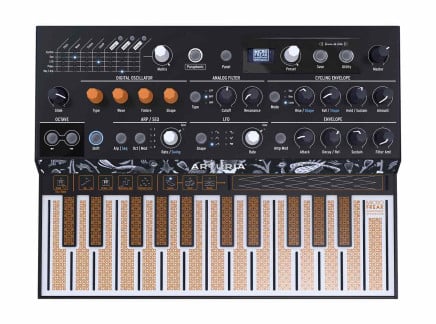We've had filter banks on the brain lately: collections of fixed-frequency filters not uncommon to modular synths and other boutique sound processing tools. They can turn a simple noise source into an evocative, evolving soundscape—they can create the illusion that your sound is passing through a resonator—they can be anything from a simple EQ to a powerful sound sculpting tool. But where did they come from? What forms might they take? And why would you want to use a filter whose frequency you can't vary?
This article, first in a series exploring Weird FX, will give us some ideas—exploring historic fixed filter banks, vocoders, and related technologies, with patching tips and tricks along the way.
What is a Fixed Filter Bank?
A fixed filter bank is made up of a series of bandpass filters, spaced in specific intervals, with an additional lowpass filter on the low end of the spectrum and a highpass filter on the high end of the spectrum. The intervals of the filters vary from filter bank to filter bank, but they often follow equally-spaced musical intervals, such as half octaves or octaves. While a standard synthesizer filter features a single cutoff frequency, where it subtracts from or adds to frequencies above (highpass), below (lowpass), or around the cutoff frequency (bandpass/notch), an equalizer or filter bank, on the other hand, allows users to fine-tune the amplitude of preset frequency bands in the entire sonic spectrum.
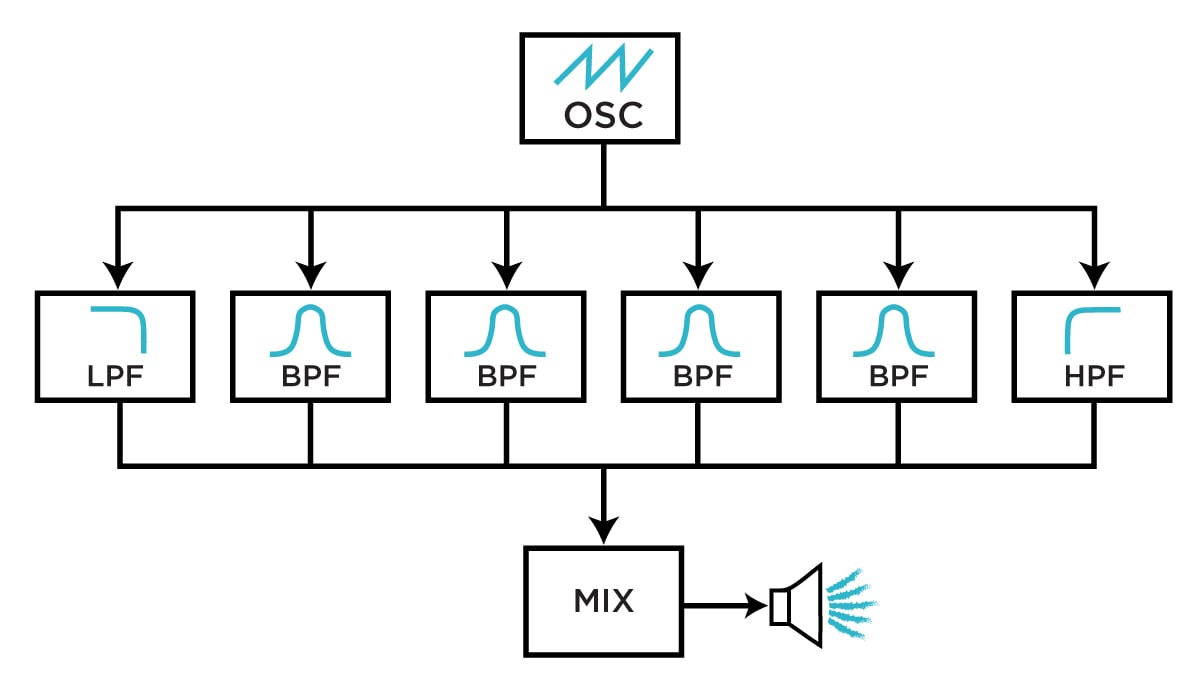
The bandwidth of each filter varies from design to design, corresponding to the number of bands. Fewer frequency bands equate to lower resolution and typically include wider frequency bandwidths. As the number of bands increases, the bands narrow so as to not overlap with each other. Filter banks often (but not always!) include some form of internal mixer, used to balance the levels between each band before going to a master summed output—but others may only offer direct outputs for each band with no mixing facility. Filter banks that do offer summing/mixing facilities also often feature dedicated "odd" and "even" outputs. One might think that these correspond to frequencies, that when expressed in hertz, correspond to odd or even integers...however, "odd" and "even" typically refer to the channel they occupy sequentially (so a six-band filterbank's "odd" output would be a mix of bands One, Three, and Five, while its "even" output would be a mix of bands Two, Four, and Six). Filter banks of all forms work best with harmonically rich waveforms, such as sawtooth or pulse waves, or with broad-spectrum noise or other complex timbres. Sine waves contain a single harmonic at the fundamental pitch and are perhaps the worst signal to use for aural effect.
The history of filter banks in electronic music dates back to the early days of tape music studios and Musique Concrete. One technique, called screening, involved putting a fixed filter bank in the feedback path of two tape recorders. By emphasizing or attenuating certain frequencies of a recorded sound being fed back into itself, the sound slowly transforms into a new entity. The filter banks used, as many of the equipment of tape music, came directly from laboratory test equipment. These bulky scientific instruments were intended for analysis of the spectral frequency of signals but translated beautifully to musical applications.
Filter Bank v. Equalizer
While both filter banks and equalizers use a series of bandpass filters in order to sculpt the harmonic and frequency content of audio, there are some subtle differences between the two. An equalizer can either introduce or reduce coloration within a sound source; taking away unwanted sonic components and adding emphasis to others. Whereas the filter bank typically only allows for attenuating the available frequency bands. Additionally, on EQs, the boost/cut comes constrained to a specific value range, say +/-12dB, and may not completely remove that band from the audio. Filter banks allow for attenuation down to the point where that band is completely removed from the sound source. However, this is not a uniform distinction, as some filter banks feature the ability to add boost or emphasis to different frequency bands.
Filter Banks in Modular Synths: Early History
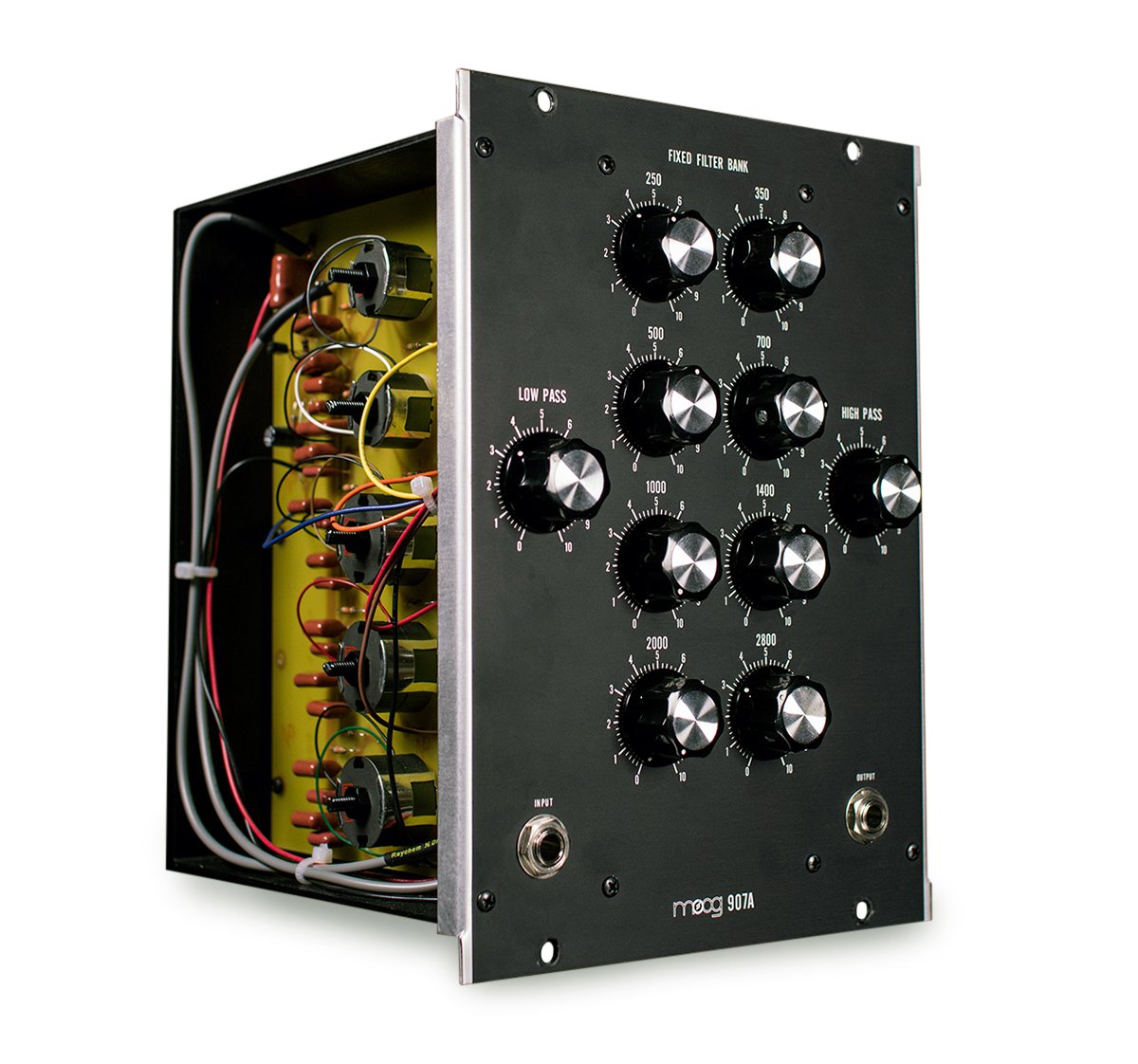
Fixed filter banks found their way into early modular synthesizers, with Buchla, Serge, and Moog all making variations on this concept. Moog included three variations, 907, 907A, and 914. The 907 featured eight bandpass filters and both a high and lowpass filter above those fixed frequencies. The 907a rotated the filter bank 90 degrees in order to save space, reducing it from a 4MU wide module to a 3MU wide module. The 914 added four additional filters and an extra input and output. These filters played an important role in the early Moog Modular system, providing an extra layer of manipulation not available on the mighty Moog 904A low pass filter / 904B high pass filter / 906C filter coupler trio alone. (Note: in the accompanying audio file, we're using a vintage Moog 907—first processing noise, then a saw wave, then multiple mixed saw waves, and then using a saw wave and feedback to make resonator-like sounds. The image, however, is of a modern reissue of the Moog 907A.)
Serge's filter bank falls more in line with EQs than a filter bank, as evidenced by the name, Resonant EQ. The module is a 10-band EQ with boost and cut on each band. Pushing the boost to the upper regions of the control adds a resonant boost to that band, providing much of its unique and peculiar timbre. One unique feature is the spacing of the filters. Many filter banks use octave or half-octave spacing for the bands, but the Resonant EQ uses major 7th spacing, in order to not emphasize a single musical key.
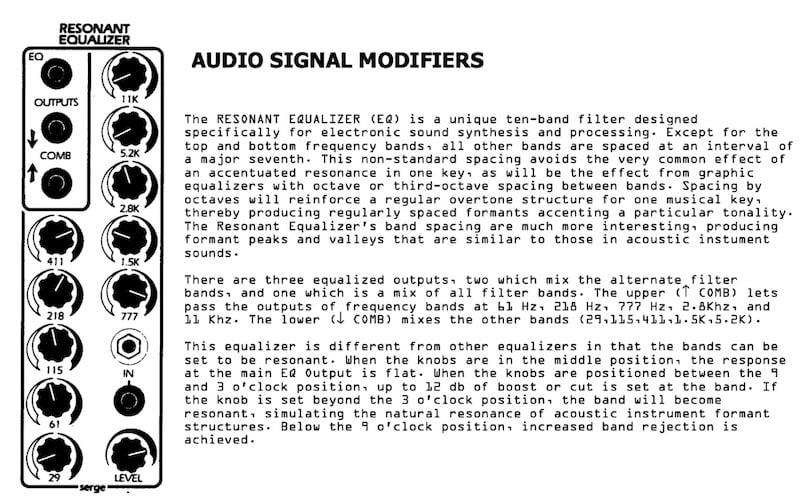
Buchla's filter bank evolved over many iterations from the 100 series to 200. It started with the 194 bandpass filter, a filter that separates an audio signal into four frequency bands. The successor, the 195, divides an audio signal into ten bands, centered at octave intervals. Neither of these modules offered an internal mixer—so if you wanted to combine bands together, you needed to use the 106 signal mixer or 107 voltage-controlled signal mixer. Buchla moved past the 100 series modules with the 200 series, a complete reworking of the concepts laid out in his original systems. The 294 Four-Channel Filter and 295 10-Channel Filter saw the addition of attenuators in order to control the amplitude of the individual bands and included a mixed output of the attenuated bands, while still retaining direct unattenuated outputs for each filter.
The Buchla 296 took the work set forth with the four previous iterations of filter banks, and brought it under voltage control. The 16-band filter bank includes a VCA per frequency band, as well as an envelope follower output that tracks the amplitude of each band with three time intervals. Program controls allowed the 296 to function more like a traditional filter with control over a boosted center frequency and adjustable width. The program control works in conjunction with the level of the filter bands, boosting the level in addition to the slider position. The "programmed spectral transfer" functions routes the envelope followers from the odd or even channel to modulate the amplitude of the VCAs of the opposite side, roughly imitating a vocoder. "How does this imitate a vocoder?," you might ask—what an excellent question.
What is a Vocoder?
Vocoders use filter banks in order to analyze the spectral characteristics of one signal and transfer it to another signal. Vocoders are made up of two filter banks, one for analysis and the other for synthesis. The analysis filter splits an excitation signal, such as a human voice, into a series of frequency bands which sets the resolution of the vocoder. Each band features an envelope follower, which takes the amplitude of the individual bands from the analysis filter and creates an envelope whose voltage is proportional to the amplitude (loudness) of each individual band. A separate sound source then passes into a bank of synthesis filters, typically with the same band frequencies as the analysis filters. The bands of the synthesis filter then pass into individual VCAs for each band. The envelope follower outputs from the analysis filter bank then control each of the synthesis filters' VCA amplitude for each of the frequency bands. This process takes the spectral energy of one source, say a singer, and transfers it to another signal, such as a sawtooth waveform from an oscillator. In modern terms, the input to the analysis bank is referred to as a "modulator," while the input to the synthesis bank is called the "carrier."
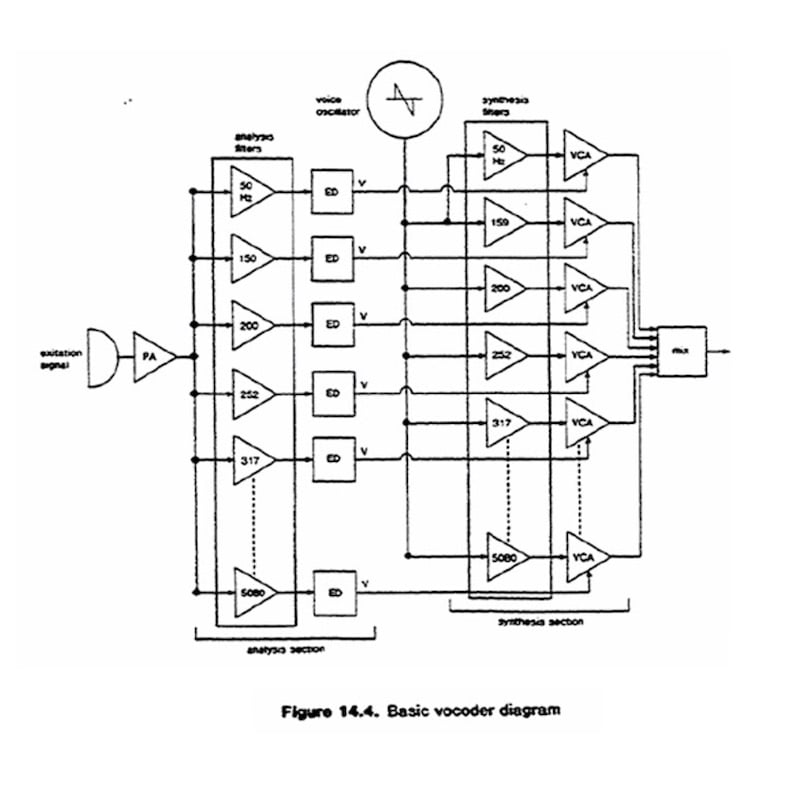 Vocoder block diagram
Vocoder block diagram
The vocoder was invented by Homer Dudley in the 1930s while working for Bell Labs. The original intention grew out of telephone circuit bandwidth optimization and radio encryption. By analyzing speech on one end and reencoding it on the other using varying control signals, a rough approximation of human speech emerged from one caller to another. The sender and the receiver needed to have the same configuration of bandpass filters and envelope followers in order to decode the information. If an enemy intercepted the message, they would find it almost impossible to interpret the information. The original signal, distinct from the spectral characteristics, is discarded by the vocoder, as it was not necessary to reinterpret the signal. This distinctly inhuman tone inherent to vocoding became a central feature that attracted many users and alienated many others in the early days of its use within music.
Vocoders may come equipped with a hiss and/or buzz circuit, noise circuits designed to synthesize the fricatives of human speech, such as "T", "S" or "Ch". Sometimes, Vocoders add a sibilance-inducing high pass filter in order to reintroduce high-end clarity to the vocoded sound, which would ruin the application of a vocoder as an encryption device. Other vocoders feature a freeze function, a sample and hold that sustains a given voiced spectrum. The freeze circuit samples the transient control voltages and holds them at a set level while they apply that voltage to the synthesizer VCAs. Some vocoders, such as the EMS-Vocoder even feature a pitch to voltage converter, allowing the pitch information of the voiced input to modulate the carrier VCO or other parameters of the patch.
Wendy Carlos worked with Bob Moog in order to develop a Moog modular-based vocoder in order to synthesize the sound of choral lines for her smash hit Switched-On Bach. She used a modified 907 fixed filter bank with individual outputs for each band. The individual bands were then passed into ten 912 envelope followers and ten 902 VCAs. These two bands then passed into a 914 fixed filter bank which acts as a decoder. This combination of modules worked in order to synthesize a 10-band vocoder.
According to Carlos, people initially hated the idea of a vocoder as a musical instrument. The idea of synthesizing the sound of an acoustic instrument was bearable to some, but few thought the sanctity of the human voice should be desecrated with electricity. In order to ease the public into electronic singing, she first composed the piece, "Timesteps." Her work with vocoding is most famously heard on the soundtrack for Stanley Kubrick's 1971 film, A Clockwork Orange.
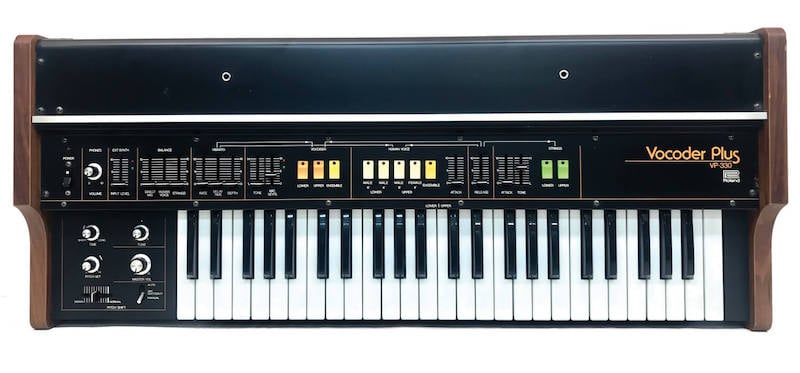
Of course, with the advent of disco, a genre that strongly embraced the peculiar potential of electronic sound generation/manipulation, the vocoder effect quickly became popular—and soon, a new type of "vocoder"/synthesizer hybrid instrument was developed. Great early examples of these types of devices include Korg's VC-10 (part of the same product line as the MS-10, MS-20, MS-50, etc.) and Roland's VP-330 (pictured above). These devices contain simple internal synthesizer engines which act as a carrier/"synthesis" signal for the vocoder, while external microphones can be used as the modulator/"analysis" signal. Used by artists ranging from Electric Light Orchestra to Laurie Anderson and Daft Punk, devices like these are how most envision what a vocoder is—a keyboard instrument with a microphone attached, using an internal synthesis engine to transform your voice into a more robotic-sounding signal.
However, we should now know that there's more to it than just that—a vocoder is actually simply a combination of two filterbanks, a lot of envelope followers, and a lot of VCAs—not necessarily a keyboard-based instrument at all. The perhaps not-so-obvious implication is that vocoders can be used to impress the spectral profile of any sound onto any other sound, making them a powerful tool for sound manipulation regardless their format. So while we usually think of a vocoder as a device that mashes together the characteristics of a "synthesizer tone" and a voice, remember: if your vocoder has dedicated inputs for analysis and synthesis sounds, there's nothing stopping you from transferring the spectrum of a train onto a lion's roar, a can opener onto a rainstorm, or a meat grinder onto a string orchestra.
Filter Banks in Modular Synths: Eurorack
The ADDAC601 is an eight-band fixed filter bank with individual CV control over the amplitude of each of the eight bands. The bands range from 50Hz up to 11kHz with approximate octave spacing. It includes two inputs, one attenuated and the other unattenuated, and a dry/wet mix control. Each band features a level control, both on a potentiometer and with a dedicated linear VCA. An envelope follower output on each band makes it a powerful and versatile modulation source in addition to its sound processing capabilities. Outputs include dry/wet mix, wet, even, odd, and individual band outputs. Individual outputs and multiple inputs make the ADDAC601 great for feedback patches. Taking one of the many outputs, processing it with other modules, and then routing it back into one of the inputs results in unpredictable and sonic complex results. Modulating the pitch or timbre of one of the input signals creates another, subtler, form of feedback where the filter influences itself.
Due to the fact that the module includes envelope follower outputs and VCAs per band, it can function as a vocoder. This requires a secondary filter bank, such as another ADDAC601, in order to analyze and decode the spectral information from a sound source to a carrier signal. Matching two ADDAC601s together gives a traditional vocoding setup, where the analysis bands and synthesis bands feature matched frequencies.
The Serge Resonant EQ from Random*Source is a 10-band resonant equalizer, a powerful tool used for many sound-sculpting applications. As with many Random*Source modules, it is an update of the classic Serge circuit, with a few tricks up its sleeve. Except for the top and bottom frequency bands, all bands are placed at intervals of major 7ths. Serge included this non-standard spacing in order to avoid the common effect in octave or third-octave spaced fixed filter banks. These frequency spacings reinforce overtone structure for one musical key, creating regularly spaced formants that accentuate resonance in one key. The major 7th spacing produces formants that in many ways mirror the effect of acoustic instruments.
Between 9 and 3 o'clock on the knob position, the bands add 12dB of boost or cut. Increasing the gain of the bands above 3 o'clock adds resonance to the bands while turning the knob below 9 o'clock increases the band rejection. The Random*Source redesign of the Resonant EQ adds both an internal feedback path, as well two inputs that lend themselves to feedback configurations. The internal feedback loop features both positive and negative feedback available on a phase inversion switch. Positive feedback acts much the same way as patching one of the outputs back into the input. It introduces non-linearity and distortion. Negative feedback, on the other hand, adds phase cancelation at the given frequency bands of the Res EQ. The module will self-oscillate with enough feedback, so watch out for this (or embrace it).
Processing one of the four outputs and then patching it back into the second input adds a secondary form of feedback in addition to the internal feedback line. The input attenuators add fine control over the amount of external feedback going into the module. The bands tend to interact in surprising ways, particularly in feedback patches, where one band influences another with small adjustments. Unlike many of the modular fixed filter banks, the Resonant Equalizer offers an EQ-style boost and cut on each of the frequency bands.
The Verbos Bark Filter traces its lineage back to the Buchla 296, borrowing many of its revolutionary features. It eschews filter spacing based on musical divisions for divisions based on the so-called Bark Scale. Proposed by Eberhard Zwicker and named after Heinrich Barkhausen, the Bark scale corresponds to the critical bandwidth of the human ear. These bandwidths are divisions of the audio spectrum that correspond to specific frequencies of the ear related to loudness, and to some extent, pitch and timbre. If one patches flat white noise into a bark filter and gradually increases the bandwidth, the listener's perception of loudness remains constant until it overtakes the critical bandwidth. The scale includes 24 bark frequencies, from 100Hz to 15.5kHz. The Verbos Bark Filter features 12 bands, with particularly sharp 36dB/oct bandpass filters, spaced to cover two Bark bands apiece.
The Bark Filter features two inputs, one even and one odd, that include a normalled connection if you want to use one input for both odd and even. Each band features a VCA to control the amplitude of the band, individual band output (pre-attenuator), and an envelope follower output. An envelope follower knob controls the speed of the envelope followers, from snappy to long, drawn-out envelopes.
The module includes Verbos's frequency scan feature found on the Harmonic Oscillator, with adjustments for spectral tilt, width, and center. Center moves the emphasis along the frequency bands while width controls the width of this scanning, much like adjusting the frequency and bandwidth on a bandpass filter. Turning up the spectral tilt shifts the emphasis from low-frequency content to high frequencies. These three controls all add to the position of the attenuation sliders—much like in the original Buchla 296.
Two Switches allow for the envelope followers of one set of bands to control the amplitude of the other set (odds to evens or evens to odds). This approximates a six-band vocoder, but since the bands are not matched, does not follow the typical implementation of vocoding. In truth, six bands don't work great at intelligibly reproducing complex sounds such as the human voice, but can lead to spectacularly interesting results when used experimentally.
Modern Vocoders
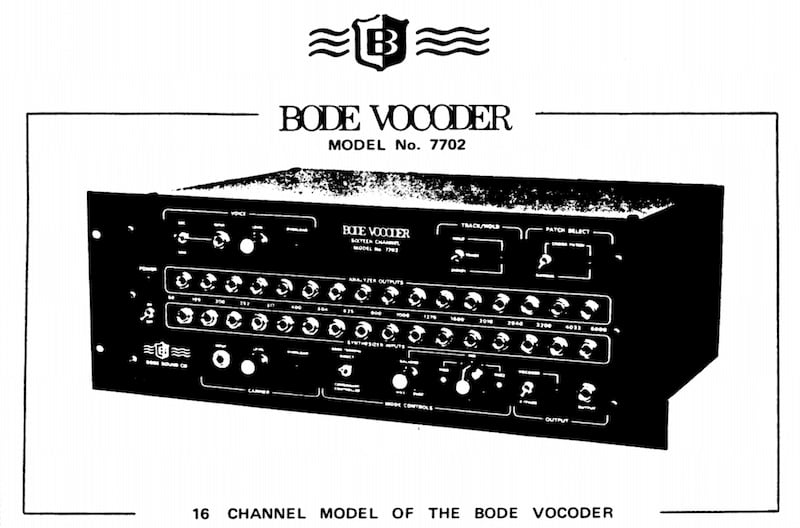
While Wendy Carlos' "Spectrum Encoder/Decoder" patch explored earlier worked as an early vocoding implementation with the Moog Modular System, Moog went on to release a dedicated vocoder. The Moog Vocoder, recently reissued by Moog Music Inc., is essentially a recreation of the earlier Bode 7702 Vocoder. This vocoder was rereleased in 2020, which retained the features that made this vocoder a classic. It features 16-channels of analysis and synthesis. Each analysis band features an envelope follower output and each synthesis band features a VCA input. With the flick of the external patch switch, the envelope follower outputs run directly into their corresponding synthesis VCA inputs. However, because it's fundamentally a modular vocoder, you get the option to control the amplitude of the synthesis bands with non-matching analysis bands or external modulation sources.
The other aspect of the modular nature of this vocoder is that it features no internal oscillator. This means that users have to supply not only the program/excitation input but also the carrier input. It features both a buzz and hiss circuit for voiced and unvoiced sounds. Select between buzz, hiss, and a combination of both, with a knob to balance between the two. The switched/direct switch introduces some of the high-frequency content from the voiced input above 5080Hz. This allows you to reintroduce high-frequency sibilance and clarity. A sample and hold circuit freezes the levels of the analysis bands and features a footswitch input to turn this on and off. Additionally, Moog included footswitch inputs to activate the external patch normalization and to bypass the vocoder completely.
The GRP V22 is another analog vocoder with 22 bands of synthesis and analysis. It features 20 bands of 48dB/oct bandpass filters as well as a low pass filter at 185 Hz and a high pass filter at 7050Hz. It features a combination XLR/TRS input with a preamplifier, compression, noise gate, and dedicated VU meter. The internal carrier oscillator features pulse and sawtooth waveforms with FM and pulse-width modulation. The voiced and unvoiced sections add clarity to the vowels and diphthongs of a human voice, by using the carrier oscillator (voiced) and a white noise source (unvoiced). A comparator with an adjustable level analyzes the incoming signal and adds the voiced or unvoiced signals in order to match the spectral energy of the incoming signal. Vowels correspond to voiced sounds, while sounds such as "T", "S", and "Ch" are unvoiced. Separate inputs for the voiced and unvoiced sections allow for external signals to replace the internal ones. An internal modulation LFO adds vibrato and pulse width modulation to the vocoded signal and features square and triangle waveforms.
The envelope followers feature a slew circuit that adjusts the speed of the envelope followers. This ranges from no change in envelope follower speed up to a glacially slow envelope. A dedicated freeze switch stops the analysis bands in their tracks, holding at their current level. The coupling switch selects the routing between the analysis envelope followers and the synthesis VCAs. In the center position, 0, the analysis bands directly control the corresponding synthesis bands. Turning to the right, (+1, +2, and +3) or to the left (-1, -2, and -3) offsets the bands and shifts the envelope followers to a band one, two, or three bands away, either going up or down in frequency. For example, when in the +2 position, the first band modulates the third band, the second band modulates the fourth band, etc. The V22 offers real analog vocoding with a powerful arsenal of features that makes it go above and beyond your standard vocoder.
Vocoders in Virtual Analog Synthesizers
Luckily, you don't necessarily need to pay the price for a Moog Vocoder or GRP V22 in order to experiment with vocoder techniques. Vocoder functionality can be found in a handful of other formats—including software (as in Arturia's Vocoder V), guitar pedals (as in the Electro-Harmonix V256), and more. We have a hunch, though, that much of the modern fascination with vocoders stemmed from their inclusion in Virtual Analog synthesizers from the turn of the millennium onward.
Virtual Analog synthesizers rose in popularity over the late 90s and early 00s. In order to appease the increasing demand for analog synths, many companies (Clavia/Nord, Access, Korg, Oberheim, and others) began to produce wholly digital imitations of analog workflows. These wholly digital synthesizers sought to capture the sound of analog synthesizers using analog modeling to recreate the component behavior of vintage synths. Somewhat oddly, many of these synthesizers, including the Access Virus, Alesis Ion, and Korg MS-2000 and microKORG included internal vocoder engines, often as an "effect" or as an alternate mode of operation. These used an external audio input as the modulator input and the internal synthesizer engine as the carrier. Honestly, it feels odd that this feature was "crammed in" to many of the instruments that it was—after all, there weren't many (or any?) fully-featured vintage analog synthesizers that featured built-in vocoders—making it clear that the VA phenomenon was less about emulating specific devices or workflows, and more about presenting a curated "best of" list of synth/effect functionality in single devices. (VAs are fascinating, and we'll definitely talk about them in greater depth in a future article.)

Many VA synthesizers, including the Access Virus, Alesis Ion/Micron, and Korg MS-2000/microKORG included internal vocoding engines. These typically used an external audio input as the modulator input and the internal oscillator engine as the carrier. However, some went further than that: the Ion/Micron and Korg MS-2000/microKORG each include a pair of line inputs, which among other things allows both the carrier and modulator to come from external sources. (The accompanying image, from the microKORG user manual, demonstrates how to set up a vocoder patch using its gooseneck mic as modulator and an external groovebox as the carrier. The accompanying audio file uses the microKORG first as a conventional vocoder with external microphone, but then uses the Make Noise Strega/0-Ctrl combo as a modulator for the microKORG's internal carrier synth engine, with a bit of the dry Strega signal mixed in.)
The microKORG has survived almost 20 years, with Korg still producing them into 2021. The design grew out of the MS-2000, though the microKORG features an eight-band vocoder in contrast to the MS-2000's sixteen-band vocoding. However, the vocoder is treated in sales literature as a primary feature, and the instrument is listed on Korg's site as a "synthesizer/vocoder." The combination of analog modeling synthesis engine, vocoding capabilities, and relatively low price point made the microKORG an essential tool in many musician's arsenals when it first came out—and it remains a formidable entrance into the world of synthesis even to this day. If you're looking for a solid, great-sounding first synthesizer, it's hard to go wrong with a microKORG.
Arturia's Microfreak hybrid synthesizer combines digital oscillators with analog filtering and unique sequencing possibilities. The touch-plate keybed, cycling function generator, and aleatoric sequence generation take inspiration from modular synthesizers, but it features minimal connectivity to external modular gear, letting itself sit as a self-contained instrument. In 2020, Arturia released a software update, a microphone, and a limited edition keyboard that added a vocoding engine. The headphone output features a TRRS connection, much like on your smartphone. This allows for sending and receiving audio through a single connection. As with the other oscillator engines, the carrier waveform includes several shaping parameters that alter the character of the vocoding. This includes waveshape, noise amount, bandpass filter position, and bandpass filter widths. The sixteen included presets each bring a different presence to the vocoder that works great as a jumping-off point for further sound exploration. If you're looking to explore the vocoder functionality of your Microfreak, just add this microphone and you'll be good to go!
Not Quite a Vocoder, Not Quite a Fixed Filter Bank
The 4ms Spectral Multiband Resonator is a filter bank, but far from a fixed one. It features six bands of bandpass filters but instead of fixed frequency bands, the bands are fully adjustable. These bands are quantized to different scales, from blues to Wendy Carlos' alpha and beta to Mesopotamian and Gamelan. The different frequencies sit arranged on a circle of LEDs in the center of the module. The position of the frequencies is set by several interrelated controls. A rotation CV input rotates the bands around the circle based on the polarity and strength of the CV. A pair of trigger inputs rotate the entire set of bands either clockwise or counterclockwise on each trigger pulse. With the spread control at its minimum value, all six bands sit adjacent to each other. Turning up the control or applying CV spreads the six bands into different frequency relationships. The morph control adds slew to the frequency band movement, adding sliding and lag to the movement.
Variable resonance or Q control allows the module to behave as everything as a simple bank of bandpass filters to a resonating voice. Each band features a VCA and envelope follower outputs. The CV slew switch and fast/slow switch set the envelope speed. The odd band input is normalized into the even band input, and with nothing patched from the odd output, those bands also pass into the evens output. Not only does the module work great at processing audio, but it also functions as a standalone sound source. With nothing patched into the inputs, a normalized noise source allows the filter bank to create sound on its own. Sending the two inputs gate or trigger signals creates a percussive hit, reminiscent of a marimba or other tuned percussion, great when using the Gamelan scales. While some users complain about the pure sine wave tones the module tends to output, but passing the outputs into a wave folder adds bite and character.
Not a Vocoder—the Peculiar Tale of Auto-Tune
Of course, effects similar to vocoding are prevalent in popular music...namely, Auto-Tune. This pitch correction software has been used in countless albums since it launched in 1997. Artists such as T-Pain have used this effect to create a distinctive digitally controlled vocal sound that always hits the right notes while singing, providing real-time quantization of your voice. The recording industry uses Auto-tune extensively, in subtle or not-so-subtle ways. This auto-correctional software sits somewhere between a vocoder and a quantizer. It analyzes the singer's voice and snaps the notes to a predefined scale. Where vocoding completely discards the frequency information of the source material in favor of the carrier oscillator, auto-tuning imposes structural order to the frequency content of the singing. So are vocoders or FFBs and Auto-Tune the same thing? No, absolutely not. But we probably won't get another excuse to talk about Auto-Tune anytime soon, so let's lay down some thoughts about this fun, peculiar, and oddly ubiquitous technology.
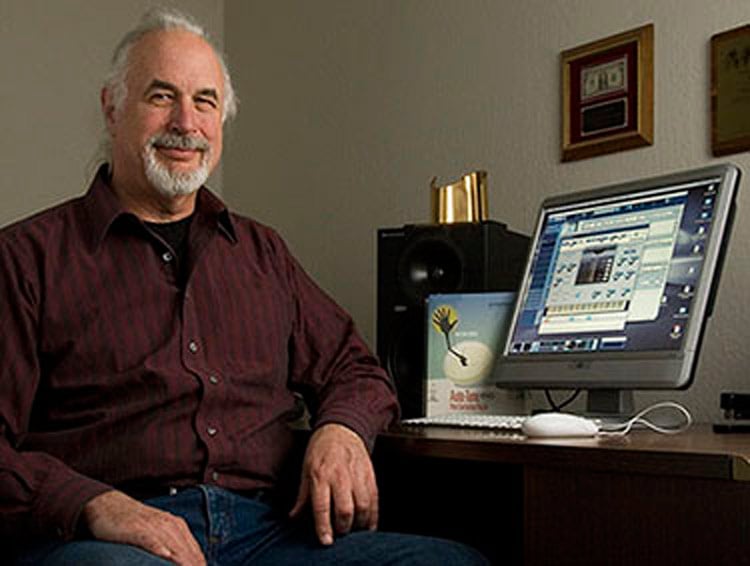 Andy Hildebrand, image via Pro Tools Expert
Andy Hildebrand, image via Pro Tools Expert
Andy Hildebrand initially developed the foundations for Auto-Tune for, of all things, oil companies. This pitch correction software traces its back roots to technology used to analyze seismic data to image subsurface locations using sound waves to find oil sites to drill. Hildebrand worked for Exxon for a time and then as CTO for Landmark Graphics, which pioneered using sound waves for 3D seismic maps used by oil companies. After he left Landmark, Hildebrand went back to school to study music composition. While in school, he developed a piece of software called "Infinity" that worked to make sampled instruments more natural sounding. After founding Antares, he started work on the problem of "a box that will let me sing in tune," as suggested by an acquaintance during the NAMM show. After initially shrugging it off as a poor idea, he found inspiration when he realized he could use some of the same techniques used in seismic imaging.
Other engineers that tried to create pitch correction software ran into roadblocks with the amount of processing power and amount of variables needed to be analyzed to synthesize the "correct" pitch. They used a technique called Feature Extraction, which reduced the set of features in the dataset, called a feature vector, to a more manageable amount. This was intended to capture a limited dataset of features in sound waves and correlate them with pitch. This method was too simple in its implementation. For example, it couldn't accurately recognize diphthongs and created artifacts in the resulting sound. Diphthongs are when the human voice glides from one vowel to another in a continuous manner.
While working as an oil engineer, Hildebrand used autocorrelation, an attribute of signal processing, to analyze the entire dataset to get more reliable estimates instead of a few critical variables from a limited feature set. While attempting to work on the pitch correction problem, he realized he could use the same method and apply it to music. He would say years later on a Nova Q+A for PBS:
"Seismic data processing involves the manipulation of acoustic data in relation to a linear time-varying, unknown system (the Earth model) for the purpose of determining and clarifying the influences involved to enhance geologic interpretation. Coincident (similar) technologies include correlation (statics determination), linear predictive coding (deconvolution), synthesis (forward modeling), formant analysis (spectral enhancement), and processing integrity to minimize artifacts. All of these technologies are shared amongst music and geophysical applications."
However, the autocorrectional method required an incredible amount of computational power, with hundreds of multiply-adds for every data point in the human voice range. However, he overcame this daunting task with a bit of mathematical genius, turning millions of multiply-adds into just four. He describes it as "a mathematical trick." Some trick, I guess.
Hildebrand and Antares debuted Auto-Tune at the 1996 NAMM show on a specialized Macintosh computer designed to run and show off what auto-tune could do. It was a massive success among attendees. Antares released both a software and rackmount hardware version of Auto-Tune to studios across the world. Although it was a hidden secret among record producers for the first few years of its existence, in 1998, Cher's "Believe," with its distinctive auto-tune vocals, became an international hit. Originally, autotune was used subtly, slightly nudging notes up to down to fit the correct key. Hildebrand designed a variable speed for the pitches' auto-correction, with 1 the fastest and 10 the slowest. He added the 0 setting almost as a joke, which immediately changes notes, defining what we think of as autotune today. Time magazine would go on to call it "one of the worst inventions of the 20th century," joining Auto-Tune on that list are subprime mortgages, spam emails, agent orange, and Tamagotchis.
The TASCAM TA-1VP is a rack-mount vocal processor that includes auto-tune functionality. An onboard microphone modeling function mirrors the characteristics and behavior of many classic microphones. Compression, EQ, and de-essing to fine-tune the sound of your vocals. The variable speed auto-tune features both preset scales and the ability to customize your own scales. It's a great addition to studios that work in genres from pop to R&B to hyperpop.
From FFBs to Vocoders and Beyond
Fixed filter banks come in a variety of forms. From simple EQs to the analysis and synthesis of the vocoder, they cover a wide range of functionality and uses. Although they may seem limited in the scope of their functionality, careful attention and consideration of a filterbank unlocks unique sonic territories. These unsung devices have shaped the character of music from the mid-20th century well into the 2020s; sculpting, crafting, and reshaping our notions of creating and listening to music.

